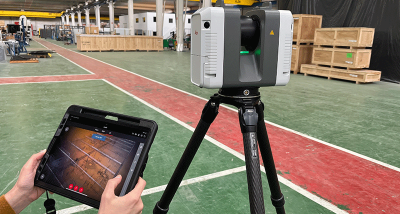I think it’s human nature to not recognize a sea change when you’re right in the middle of it, particularly if you’re heavily involved in the mechanisms of making it happen. That’s true of a wide range of seismic shifts, whether it be related to technology, lifestyle, or anything else. I bring this up because, as a relative newcomer to this specific tech space, my experience within it is different from a lot of people in the industry who have been in it for decades. There are certainly pros and cons to being that kind of relative newcomer, but to me one of the great benefits of my perspective is that I’m constantly amazed by these new innovations in a way that can be difficult when you’re in the weeds. I had one of these moments this past week with all of the news coming out of NVIDIA’s GTC.
Although I wasn’t able to attend the digital event this past week, I was certainly keeping up with the news coming out of it, which touched many different sides of tech. From my perspective, the things that most caught my eye were all of the nuggets coming out around the Omniverse, NVIDIA’s platform for, in their words, “creating and operating metaverse applications.” Specifically, we saw a few geospatial or geospatial-adjacent companies announce new integrations, extensions, or collaborations with the Omniverse, including Vectorworks, Cesium, and NavVis.
Part of this excitement is pretty simple to explain: This stuff is really cool! But to go deeper than that, it makes me anticipate where all of this is going in all of the best ways, and specifically around all of the connections to the Universal Scene Description (USD) framework, the foundation of the Omniverse, which was originally developed by Pixar Studios. From NVIDIA’s website, it is “more than a file format, it’s an open source 3D scene description used for 3D content creation and interchange among different tools,” and it is becoming a standard in the 3D asset creation space.
And this is what really gets to the crux of my excitement, that we’re seeing this continued acceptance of USD as a standard. Without that agreed upon standard in place, we’re simply not going to see widespread adoption and, in turn, these 3D, interactive environments becoming the norm in our industry and others.
Of course, thinking about all of this and the use cases which can arise from these connections and a general growth in usage of 3D environments, it’s hard not to go right to the metaverse. This is something we’ve written about here at Geo Week News, and it goes without saying that the idea of a metaverse and opinions around it have been a rollercoaster, to say the least. There’s a whole other conversation to be had on the consumer side of things, but for now I’ll keep my thoughts to myself. Lately, it’s become apparent to many that it’ll likely be the “industrial metaverse” which will lead the way, and if you ask some people that piece is already there.
I would probably push back on that particular idea, but it’s also a bit besides the point. Whether you want to call the workflows that already exist the metaverse or not – and we should mention that BMW did recently kick off their global rollout of its Omniverse platform – it’s clear the direction we’re heading, and this idea of standardization is key to holding the momentum.
I go back to that article linked about about the metaverse and a conversation I had with Nadine Alameh, the CEO and President of the Open Geospatial Consortium, while putting it together. In that conversation, she talked a lot about the need for standards in this space. Essentially, she said, no one company or person is going to be able to build this up on its own. Integrations and collaborations are going to be the key for maximum value, an idea which led to the creation of the Metaverse Standards Forum, of which the OGC is a founding member. There aren’t many better examples of this standardness and interoperability than USD. Seeing more of these integrations within it and more companies entering its fold is only a good thing for the future of 3D environments for all sorts of use cases.
Prior to joining this space, I covered baseball, and one line you hear a lot from people in the game is that development is not linear. Essentially, they mean that a young player will not improve their game in a straight line, but there will be highs and lows on the road to the majors and throughout their career. The same can be said with technological development, especially for an idea as big as the “industrial metaverse.”
I’m not going to sit here and tell you there won’t be setbacks, and there won’t be skepticism. If I'm being honest, I’ll probably be among the skeptics at times. But this past week, seeing all of these announcements seemingly nonstop coming through my LinkedIn feed, has made me take a step back and think that I just might be seeing the future unfold in front of me. This isn’t the last step, and it’s probably closer to the first one, but it’s exciting. I’m grateful I get a front row seat.






